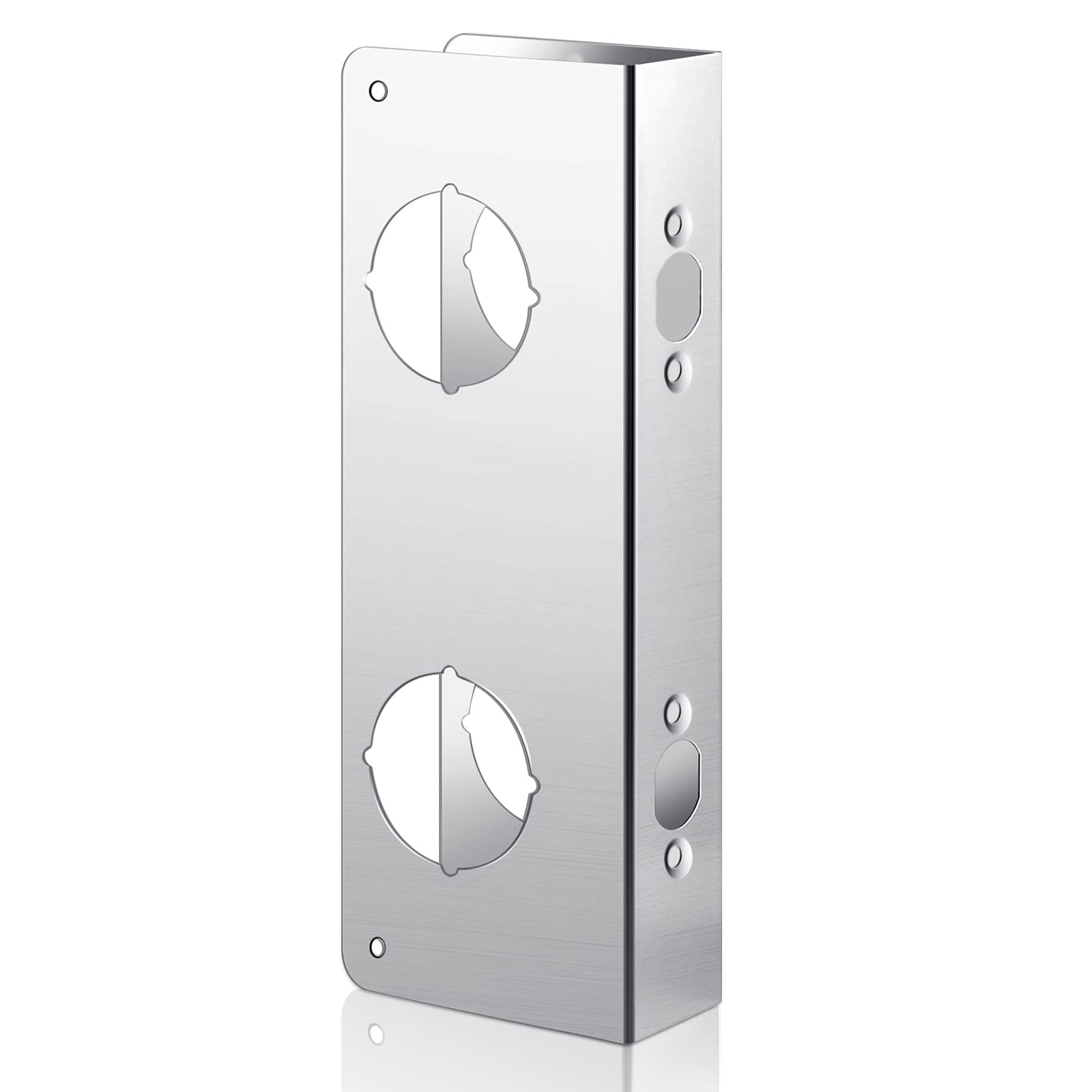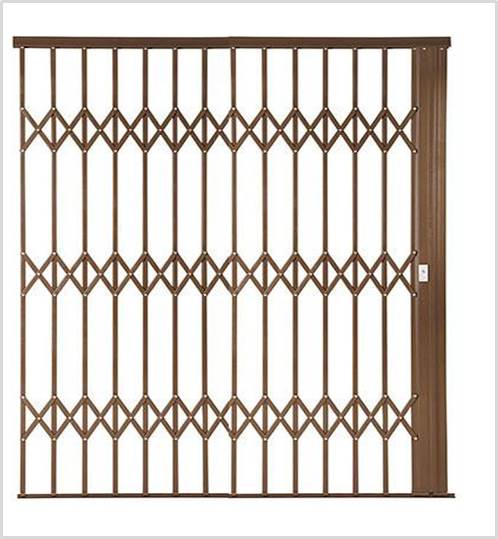
It is possible to retrofit your deadbolt with a smart lock without replacing it. It typically replaces the part of your deadbolt that's on the inside of your door, but it still works with your existing keychain. This lets you still use your keys, but you can also unlock and lock your door from your smartphone using a compatible app.
There are several types of smart lock retrofits, based on the type of hardware they replace. Some smart locks retrofits replace the entire deadbolt hardware while others replace only a portion that is controlled via a smartphone application. Consider one of the smart locks that can be linked to your home's wifi network.
The August Smart Lock is a solid choice for those who want to upgrade their existing deadbolt without having to remove and replace it. The August Smart Lock is compatible with the majority of modern locks. It also has energy-saving functions that will save you money.
It is unlocked using your finger (if you are in range). The app works with both Bluetooth and WiFI. The August app selects the connection that it will use automatically, optimizing battery life.

You can control your lock and monitor it from anywhere using a smartphone. This is great for property management companies who want to be sure guests only get access when allowed. You can give a guest a key and then revoke it, you can get notifications when guests open or close a door, and you can even log their activity.
The Yale Assure Lock 2 will be a great option if you want a smarter lock. The Yale Assure Lock 2 can be unlocked and locked with a fingerprint, keypad or finger scanner. It works with Alexa or Google Home and is programmable for different access levels, such as for children or renters.
Unlike other smart locks, the Assure Lock 2 can be upgraded over time to meet changing smart home standards. Depending on the model, it can be upgraded to include a touchscreen or app, a geofencing feature, fingerprint sensor, etc.
This lock has a small, round design that makes it look more like your traditional deadbolt than other replacement locks we've seen. It comes in black or silver and is not too noticeable on the interior.
Level Lock is the only smart lock that fits over your existing deadbolt. This means you won't have remove it. It's easy to install in minutes, and it looks great.

It's powered by two CR123 batteries, which should last three to six months. It isn't as durable as Schlage Secure Pro or Lockly Secure Pro powered by AA batteries which last 12 months but it is much better than other smart locks tested.
The Level Lock is a great way to upgrade your existing deadbolt, but it's not the best choice for everyone. It's up to you whether you feel comfortable using your smartphone as your primary lock or prefer the security and traditional feel of an old lock.
FAQ
Are there any real reasons to have a home alarm system?
Home security systems are essential if you have a home. Anytime, a burglar can break into your home without warning. They will take everything they want, even expensive jewelry. You can leave your doors unlocked and they'll take everything.
Home security systems can help protect your home by notifying you when something happens. You can view the recorded footage and receive alerts from your mobile device when motion is detected.
You can use a DIY camera to replace a costly home security system. These devices allow you to see who's at your front door, and will send you notifications when they enter. These devices won't prevent intruders from breaking into the home.
Which home security system offers the most features?
The Ring Video Doorbell Pro has the most features out of all thehome security systems we reviewed. You can view who is at your doors, talk to them over your phone and record video. You can also save recordings to the cloud with this free service.
What is the best wireless system for security?
D-Link Wireless Security System has been my top choice for wireless security. It is the most affordable system available. Everything you need is included in one package. It includes a motion sensor, camera, and remote control. Just plug it into the outlet and follow its simple instructions.
What is the number 1 home security system?
Ring Video Doorbell Pro is our number one home alarm system. It allows you speak and see anyone anywhere, anytime using your smartphone. You can also record video and share it via text message and email with your friends and family.
How do you choose between different home security systems types?
You should consider what kind of threats are in your area. You might consider installing an alarm system that sounds when someone enters your house. If you live in a rural area where there aren't many burglaries, then you may not need as much security.
You also need to consider whether or not you're willing pay more for these extra features. Some systems include cameras built in, while others do not. Some allow you monitor your house remotely while others require you physically to view the footage.
Which home security system is the most highly rated?
The most popular home security systems are ADT Pulse, Ring Alarm, Vivint Smart Home Security, and Protect America.
What is the cost of a home security system?
A good home security system costs about $2,500. It may seem like a large sum, but the security and peace of mind that you will get from a home with a good system is very affordable.
Statistics
- Unlike other online safety services that charge up to 100 percent of your monthly fee, Cove charges no upfront fees and has no hidden costs.
- (In my experience, the discount on my home insurance covered about 25 percent of the subscription of an average plan, but your mileage may vary depending on your location and the size of your home.) (theverge.com)
- Related questionsHome security systems that are 100% DIY (safewise.com)
- That's probably why Cove has a whopping 98%* customer retention rate. (safewise.com)
External Links
How To
How to Install A Home Security System
A home alarm system is a device which monitors your home and alerts when there's an activity. It could be motion sensors, doorbell cameras, smoke detectors or burglar alarms. A home security package usually includes one or more sensors (e.g. a motion detector), which send signals whenever they detect sound or movement. The signals are then sent over to a control box where they are monitored and recorded. If there's something wrong, like someone breaking into your house, the control panel sends out an alert to your phone, tablet, computer, or voice assistant. You'll be able to immediately take action and know exactly what's happening.
The first step to installing a home security system is choosing the right type of sensors for your home. There are two main types, passive and active. Passive sensors don’t need batteries. Instead, they simply pick up sounds or vibrations from the environment. They can be doorbells or sirens as well as buzzers. Active sensors use electricity for data transmission. Some examples of this kind of sensor are cameras and motion sensors.
There are many brands of sensors today. Each brand has their own pros and cons. Some sensors can withstand extreme weather conditions, while others cannot. Some of them have built in speakers so that you can still hear them from outside. Others are only for use inside. Some are basic while others offer advanced features, such as night vision.
After deciding on the best type of sensors for your property, you'll want to choose a manufacturer. This will ensure that all your sensors work together. The hardware store should offer many choices.
Once you have selected a brand of sensor, you need to decide the number you wish to buy. Depending on whether you live alone or with your family, most people will start with just one or two sensors. You may want to consider purchasing more sensors in the future if possible.
Next, you'll need to figure out where you want to place your sensors. Do you want them near doors and windows? Or are you happy to keep them hidden? Before you put them anywhere on your property make sure you get permission. You should also ensure that they don't interfere with electrical outlets or other property features.
Once you have determined where your sensors should be placed, you will need to find a way to connect them with your control panel. You may need a power adapter, or battery pack depending on the setup. Once you have everything set up, you'll be ready to monitor your property!